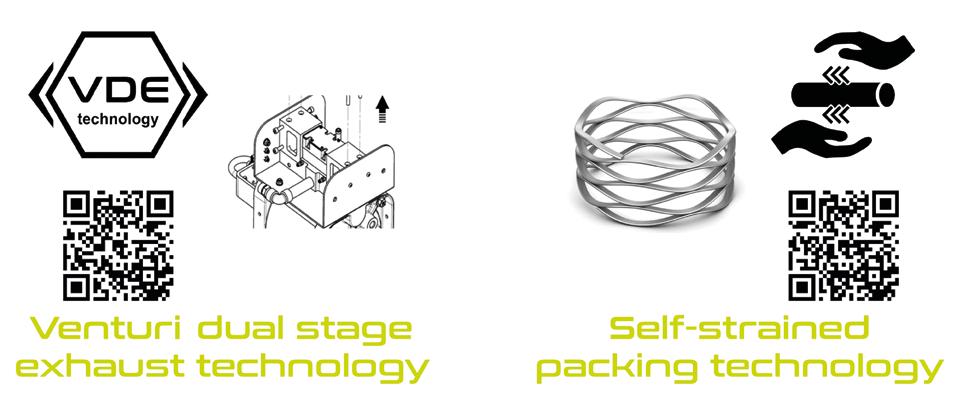
5 minute read
HIGHLIGHT OF THE MONTH
Edited by SAMES KREMLIN
Meylan – France marie-anne.guilldou@sames-kremlin.com
SAMES KREMLIN offers airless solutions for the application of anti-corrosion paints integrating new innovative and patented technologies.
The application of anti-corrosion paint has many challenges. Having to paint outdoors, applying complex or highly abrasive paints, painting very large parts or at very great distances makes this job extremely demanding. It depends on many parameters: the preparation, the conditions of intervention, the equipment for transferring or applying the paint, the ability of the painters to control the production tool. These parameters influence the quality of the finish and the life span of the protection. Making the right investments will optimise the application of paint and reduce the maintenance costs of the works. “Our customers tell us that when they have an outdoor job site, they have a weather window to paint everything. They need to be sure that they can do all the painting in that window. Meanwhile, their airless pumps must remain operational and efficient without affecting the paint application. They must not stall, they must not freeze, they must not leak,” explains Christophe Denis Bosio, Business Development Manager at SAMES KREMLIN. “We know that frost is the most complicated parameter to control and is the number one enemy of anti-corrosion applicators. The expansion of the air in the exhaust of the pump’s motor creates cold which causes the moisture in the motor’s air circuit to condense and frost. This icing accumulates in the air distributor and eventually blocks it. Our technological answer is VDE (Venturi Dual Exhaust) which prevents this icing phenomenon”. So what is this famous VDE technology? The design of 2 foam blocks (Dual Exhaust) at the exhaust of the pump’s air motor distributor has several functions:
© SAMES KREMLIN
© SAMES KREMLIN

• The first one, the evacuation of humidity out of the air circuit is done through integrated channels. The design of the housing allows the continuous evacuation of moisture to the outside. The air circuit remains dry and therefore does not freeze. • The second, the heating of the air by compression at the exhaust in the foam outwards and its acceleration through the Venturi outlets keeps it warm and prevents icing. This technology integrated in the air motor of SAMES KREMLIN pumps allows applicators to start the job and concentrate only on their work as applicators. The pump will not stall and will maintain its performance throughout the application.
On the other hand, a pump must not leak at the upper lubricant cup, as this causes the product jet to pulse at the gun, thus overconsuming paint and also polluting the environment of the workstation. The painter must in this case tighten the sealing cartridge and is constantly asking himself the question: how often should the cartridge be tightened to prevent it from leaking, did I tighten it too much, not enough, etc.? This destroys cartridges and pistons, stops the painter in his work and is extremely expensive in the long run. Christophe Denis Bosio confirms: “The very principle of the chevron joints is that they must be constantly tightened (under pressure) to guarantee their basic function: to ensure watertightness. Their undeniable advantage is their lifespan, because even when worn they can still seal by tightening them. However, this must be considered, and the painter often notices this when the pump leaks. He must therefore tighten the cartridge until it is destroyed or even damage the piston. This is very expensive in spare parts. Not to mention that during this time he does not paint. Our technological answer is the adoption of cartridges with self-tightening seal technology. Thanks to this self-tightening seal system in the upper part of the pump hydraulics, customers no longer need to worry about tightening their seals, they are constantly self-adjusting. Moreover, this system is not immersed in the paint, so there is no risk of being badly cleaned during rinsing operations and thus degrading its sealing function”. There is perhaps no application more demanding than anti-corrosion. That’s why our pumps are designed to transfer the most difficult paints with very high productivity. But the job of anti- corrosion painter is extremely difficult. That is why SAMES KREMLIN has focused on the parameters that allow it to work better and be more productive.
“SAMES KREMLIN worked on the silencer system installed on the engine. This technology makes its pumps the quietest on the market. The material chosen and the density of the foams muffle the sound allowing to respect a decibel rate at the exhaust below 80 db, which nobody has succeeded to date. In fact, when the operator works near the pump(s), he no longer needs earplugs, which increases safety on the site and limits the risk of hearing loss. We also worked a lot on his main tool, the gun. Notably its ergonomics to allow the painter to be more comfortable in his application. Furthermore, being far from the pump, when the nozzle clogs, our reversible system is designed to allow the painter to turn his nozzle and unclog it without lowering the pressure or using a tool to loosen the nozzle base. Our filters are also extremely efficient in preventing nozzle clogging and thus increase the painter’s productivity”. In addition to these technical advantages, special attention is paid to simplify maintenance solutions: optimisation of the number of components, minimisation of the number of operations to be carried out and easier access to the areas where work is to be carried out. SAMES KREMLIN offers robust and powerful airless solutions, integrating innovative technologies, with very high productivity, capable of transferring and applying all types of anti-corrosion paints. They provide effective answers to the problems encountered on building sites and allow a reduction in the cost of ownership (*) of paint application equipment. ‹
(*) All costs related to the use of equipment: consumption of products, energy, maintenance costs, etc.










